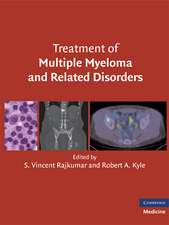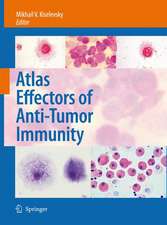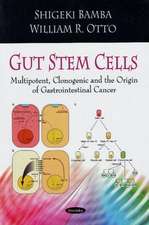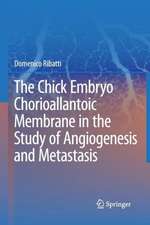Sirtuins: Proteins and Cell Regulation, cartea 10
Editat de Riekelt H. Houtkooperen Limba Engleză Hardback – 25 noi 2016
| Toate formatele și edițiile | Preț | Express |
|---|---|---|
| Paperback (1) | 980.29 lei 38-44 zile | |
| SPRINGER NETHERLANDS – 5 iul 2018 | 980.29 lei 38-44 zile | |
| Hardback (1) | 1105.40 lei 3-5 săpt. | |
| SPRINGER NETHERLANDS – 25 noi 2016 | 1105.40 lei 3-5 săpt. |
Preț: 1105.40 lei
Preț vechi: 1163.58 lei
-5% Nou
Puncte Express: 1658
Preț estimativ în valută:
211.53€ • 221.86$ • 176.09£
211.53€ • 221.86$ • 176.09£
Carte disponibilă
Livrare economică 11-25 martie
Preluare comenzi: 021 569.72.76
Specificații
ISBN-13: 9789402409611
ISBN-10: 9402409610
Pagini: 357
Ilustrații: VIII, 288 p. 30 illus., 24 illus. in color.
Dimensiuni: 155 x 235 x 22 mm
Greutate: 0.69 kg
Ediția:1st ed. 2016
Editura: SPRINGER NETHERLANDS
Colecția Springer
Seria Proteins and Cell Regulation
Locul publicării:Dordrecht, Netherlands
ISBN-10: 9402409610
Pagini: 357
Ilustrații: VIII, 288 p. 30 illus., 24 illus. in color.
Dimensiuni: 155 x 235 x 22 mm
Greutate: 0.69 kg
Ediția:1st ed. 2016
Editura: SPRINGER NETHERLANDS
Colecția Springer
Seria Proteins and Cell Regulation
Locul publicării:Dordrecht, Netherlands
Cuprins
General introduction, Riekelt H. Houtkooper.- Biochemistry and Enzymology of Sirtuins, Yue Yang and Anthony A. Sauve.- NAD+ as a pharmacological tool to boost sirtuin activity, Riekelt H. Houtkooper.- Protein lysine acylation: abundance, dynamics and function, Olga Pougovkina and Vincent C. J. de Boer.- SIRT1 in metabolic health and disease, Marie Boutant and Carles Cantó.- Deacetylation by SIRT3 relieves inhibition of mitochondrial protein function, Peter Chhoy, Kristin A. Anderson, Kathleen A. Hershberger, Frank K. Huynh, Angelical S. Martin, Eoin McDonnell, Brett S. Peterson, Laura A. Starzenski, Donald S. Backos, Kristofer S. Fritz, and Matthew D. Hirschey.- SIRT5 reveals novel enzymatic activities of sirtuins, Bin He and Hening Lin.- Diverse roles for SIRT6 in mammalian healthspan and longevity, Bernadette M. M. Zwaans, William Giblin and David B. Lombard.- Sirtuins in cancer – emerging role as modulators of metabolic reprogramming, Jaewon J. Lee, Karina N. Gonzalez Herrera and Marcia C. Haigis.- Sirtuins as metabolic modulators of muscle plasticity, Keir Menzies, Julien Francisco Zaldivar-Jolissaint and Johan Auwerx.- Sirtuins and aging, Carles Cantó and Riekelt Houtkooper.- Sirtuins and the Circadian Clock: Epigenetic and Metabolic Crosstalk, Selma Masri, Marina Maria Bellet and Paolo Sassone-Corsi.- Sirtuin activation by small molecules, Hassina Massudi, Lindsay E. Wu, and David A. Sinclair.- Future perspective, Brian Kennedy.- Index.
Textul de pe ultima copertă
The sirtuin family of proteins (SIRT1-7) received a lot of attention in recent years as they serve as metabolic sensors that control not only metabolism, but also aging and lifespan regulation. As such, sirtuins are strong targets for the treatment of age-related metabolic diseases, including obesity, diabetes, and cancer. Indeed, many research groups as well as pharmaceutical companies discovered food components and/or drugs that target the sirtuins and provide significant health benefits. This book focuses on various aspects of sirtuin biology, from basic biochemistry, via molecular function, to its role in (fighting) human disease.
Caracteristici
Key leaders in the field of sirtuin biology share their expertise Covers a wide variety of physiological processes controlled by sirtuin proteins Offers new insights into how sirtuin proteins can be targeted to treat age-related diseases Includes supplementary material: sn.pub/extras
































